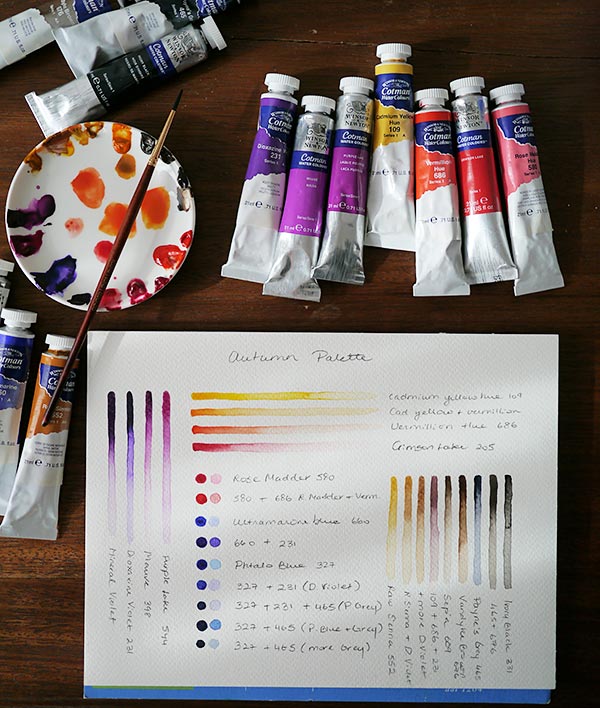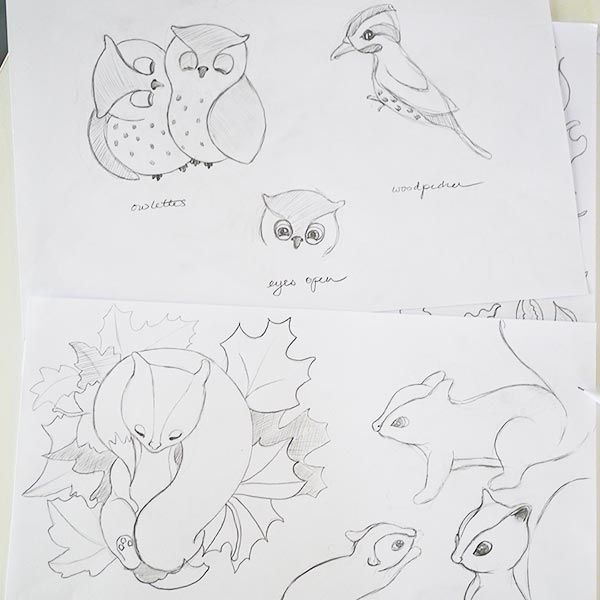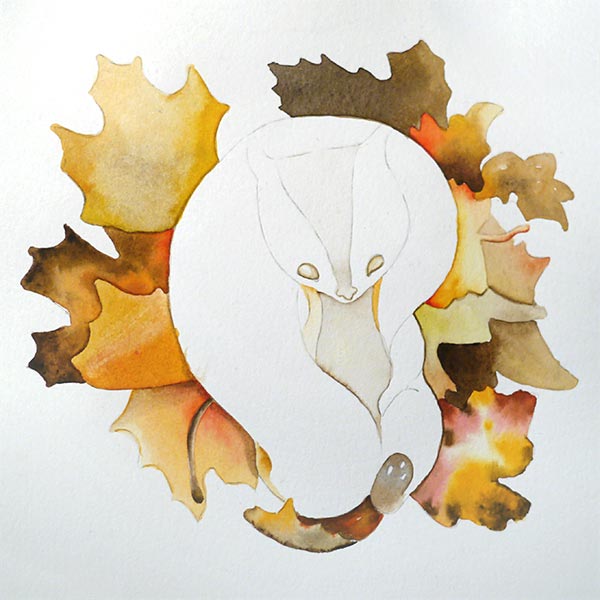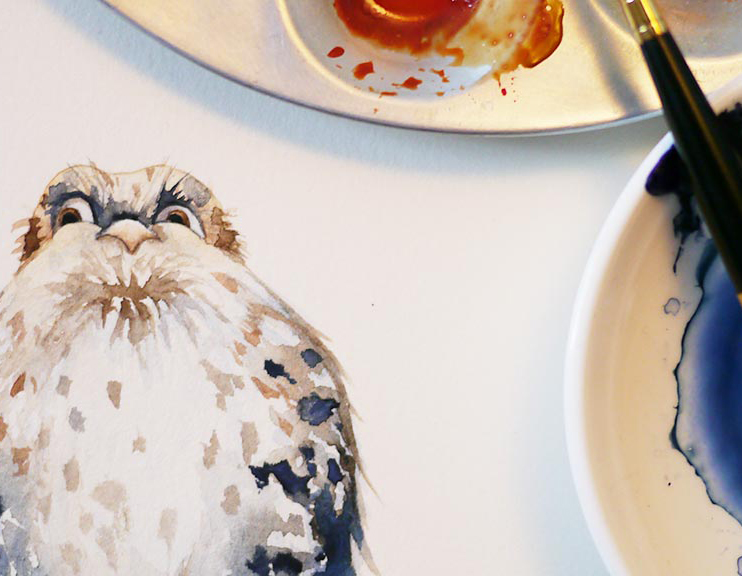Once I have a general idea of where I am going through research, I can only really get my best creative insights in a relaxed and alert state of mind, which is best achieved through meditation or when you lie down for a nap. It’s the moment when you have not drifted off to sleep. That is when my mind is just doing its own thing and something new and fresh can appear. I can visualize the story unfolding in my mind and getting it on to storyboards from there is much more intuitive. This is the same process, that I use whether I am planning a new card or a painting that will be exhibited as part of new exhibition of fine art.

For animated cards, storyboards are necessary to avoid too much revision, so the story is roughly sketched out on storyboards. This allows you to know exactly what backgrounds are needed, plan the animation and saves a ton of time when it comes to putting the card together.
Most backgrounds are hand painted - my preference is for watercolor - which provides a very story book illustrated look and feel, then scanned and edited as necessary.
Character development is a process that in itself can take days, starting with research and sketches, which are gradually refined. I prefer to hand paint the characters if possible, but this limits the flexibility for animation, so it depends on the action of the card. The alternative is to scan the sketches and create characters directly in Flash or another illustration program such as Adobe Illustrator, which allow for the greatest flexibility in terms of editing and animation.
Music is usually selected before storyboarding and animation, since the action has to be carefully cued to the music. The music sets the mood and pace of the card, so selecting the right piece can take a long time. Other times a particular music piece forms the inspiration for a card, for example the card “All this and You”. When I heard this piece I just saw two fish having a fun adventure together on the road of life. Sound effects add the final touches to the card.
We usually pen sentiments and greetings specifically for each card, since not everyone feels like they want to be a poet when sending a card. Sometimes the greeting is part of the graphic design of the card. I love doing hand-lettered word designs, which really make the message pop.



Once I have a general idea of where I am going through research, I can only really get my best creative insights in a relaxed and alert state of mind, which is best achieved through meditation or when you lie down for a nap. It’s the moment when you have not drifted off to sleep. That is when my mind is just doing its own thing and something new and fresh can appear. I can visualize the story unfolding in my mind and getting it on to storyboards from there is much more intuitive. This is the same process, that I use whether I am planning a new card or a painting that will be exhibited as part of new exhibition of fine art.

Most backgrounds are hand painted - my preference is for watercolor - which provides a very story book illustrated look and feel, then scanned and edited as necessary.
Character development is a process that in itself can take days, starting with research and sketches, which are gradually refined. I prefer to hand paint the characters if possible, but this limits the flexibility for animation, so it depends on the action of the card. The alternative is to scan the sketches and create characters directly in Flash or another illustration program such as Adobe Illustrator, which allow for the greatest flexibility in terms of editing and animation.

Music is usually selected before storyboarding and animation, since the action has to be carefully cued to the music. The music sets the mood and pace of the card, so selecting the right piece can take a long time. Other times a particular music piece forms the inspiration for a card, for example the card “All this and You”. When I heard this piece I just saw two fish having a fun adventure together on the road of life. Sound effects add the final touches to the card.
We usually pen sentiments and greetings specifically for each card, since not everyone feels like they want to be a poet when sending a card. Sometimes the greeting is part of the graphic design of the card. I love doing hand-lettered word designs, which really make the message pop.

Once I have a general idea of where I am going through research, I can only really get my best creative insights in a relaxed and alert state of mind, which is best achieved through meditation or when you lie down for a nap. It’s the moment when you have not drifted off to sleep. That is when my mind is just doing its own thing and something new and fresh can appear. I can visualize the story unfolding in my mind and getting it on to storyboards from there is much more intuitive. This is the same process, that I use whether I am planning a new card or a painting that will be exhibited as part of new exhibition of fine art.

Character Development
Most backgrounds are hand painted - my preference is for watercolor - which provides a very story book illustrated look and feel, then scanned and edited as necessary.
Character development is a process that in itself can take days, starting with research and sketches, which are gradually refined. I prefer to hand paint the characters if possible, but this limits the flexibility for animation, so it depends on the action of the card. The alternative is to scan the sketches and create characters directly in Flash or another illustration program such as Adobe Illustrator, which allow for the greatest flexibility in terms of editing and animation.

Music is usually selected before storyboarding and animation, since the action has to be carefully cued to the music. The music sets the mood and pace of the card, so selecting the right piece can take a long time. Other times a particular music piece forms the inspiration for a card, for example the card “All this and You”. When I heard this piece I just saw two fish having a fun adventure together on the road of life. Sound effects add the final touches to the card.
We usually pen sentiments and greetings specifically for each card, since not everyone feels like they want to be a poet when sending a card. Sometimes the greeting is part of the graphic design of the card. I love doing hand-lettered word designs, which really make the message pop.








